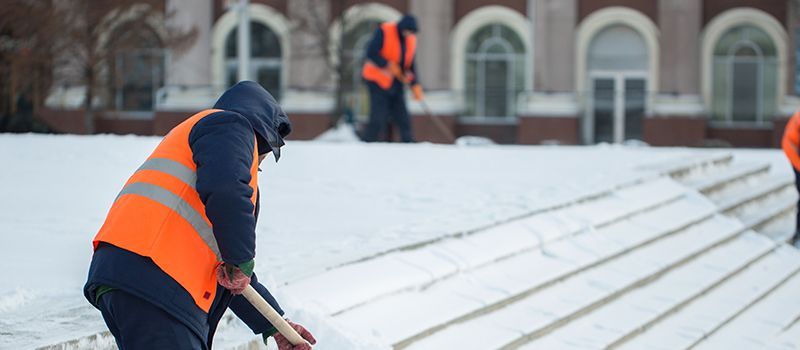Rock salt and grit are used during winter on roads, public areas and areas around business premises and homes to minimise the risk of injury and accidents due to slippery surfaces. With this in mind, we’ve put together a few facts and a quick guide on how and when to use rock salt and grit effectively.
Why use rock salt and grit?
In simple terms, rock salt is used because it has a lower freezing point than water. By spreading rock salt onto a road, path or driveway, it reduces the chances of moisture freezing on the surface. In sub- zero temperatures any water on areas which have not been treated with rock salt andgrit, will freeze and create an unsafe surface for people and vehicles.
Spreading rock salt ensures that the areas around homes and businesses are safer and reduce the chances of people falling and slipping. If you own or work for a company with a building which has land and access areas, it’s your duty to make the area as safe as you possibly can for your employees. The Health and Safety Executive state:
“Employers have to ensure that their employees and anyone else who could be affected by their work (such as visitors, members of the public, patients etc) are kept safe from harm and that their health is not affected.”
More details about winter safety in the workplace can be found on the HSE website
When should rock salt/grit be spread?
The optimum time to use rock salt is before frost andsnow is forecast, as this will then help to prevent the ice forming on the ground and prevent snow from settling.
Rock salt can also be spread on top of snow after it has settled to help the snow melt, or weaken the structure, allowing it to be moved much more easily.
What are the best methods to spread rock salt?
Rock salt can be spread manually using a shovel or a scoop and we also recommend using gloves when spreading grit manually. The rock salt should be distributed evenly over the surface area. We recommend spreading between 10 – 30 grams of rock salt per square metre to prevent ice and frost forming. If snow is forecast, we recommend increasing this quantity to 25-50 grams of rock salt per square metre.
Have a look at our range of Rock Salt here.
If you need to treat a larger area, we recommend that you use a salt spreader. There are various available from handheld spreaders, push along spreaders, right up to motorised ride on salt spreaders. These machines allow you to spread rock salt at different rates quickly and easily.
Have a look at our range of salt spreaders here.






